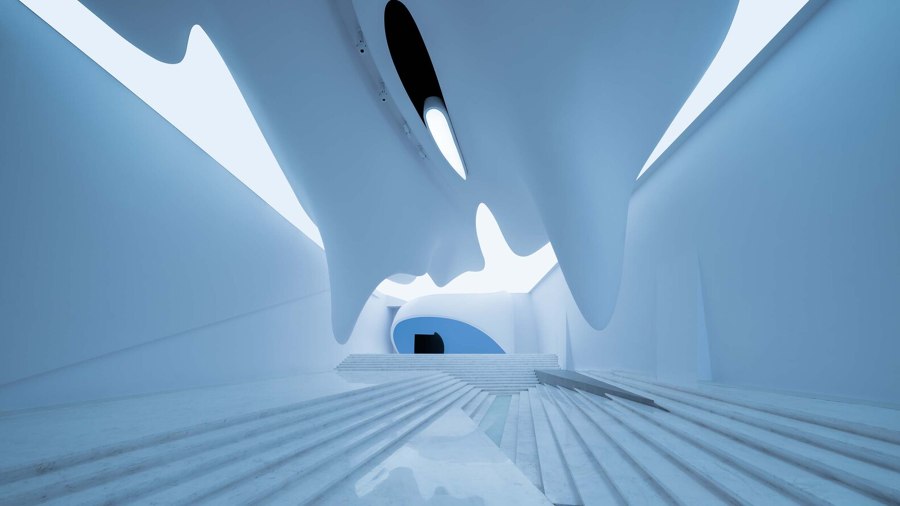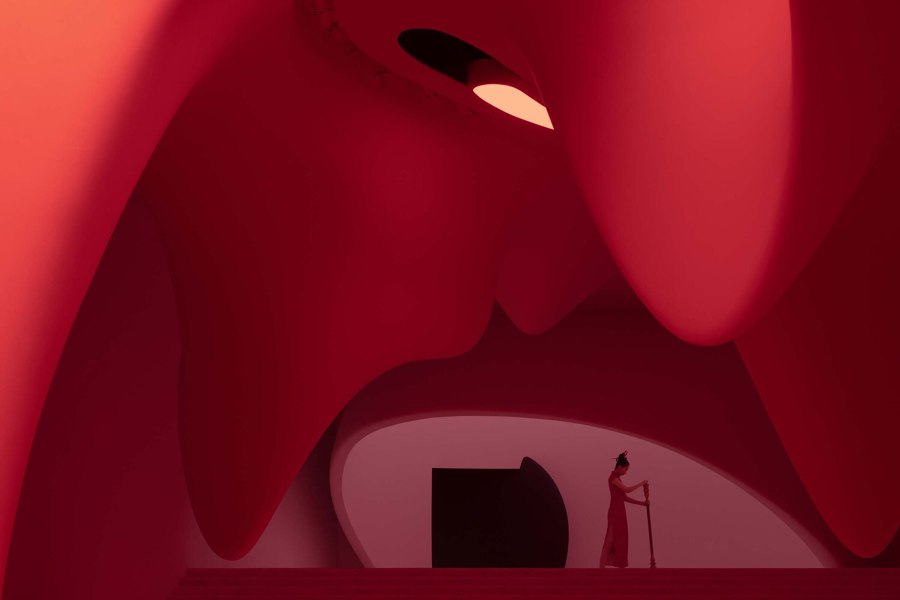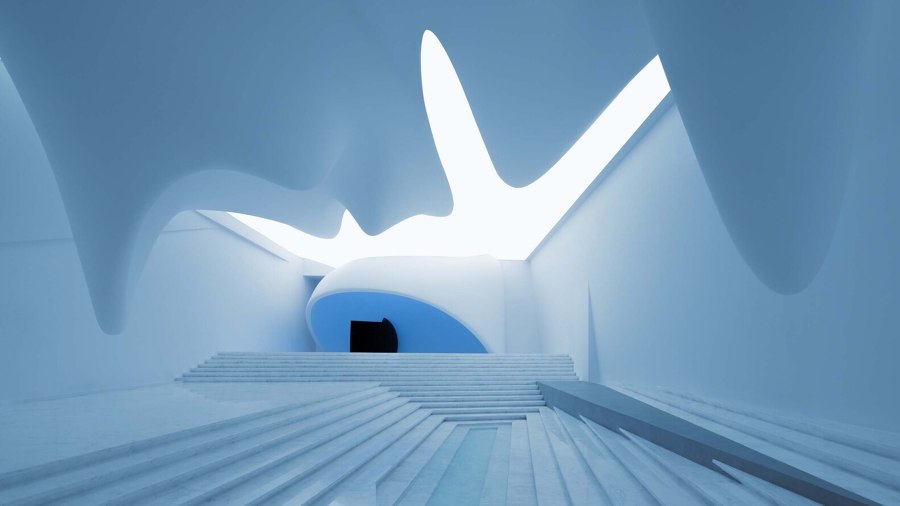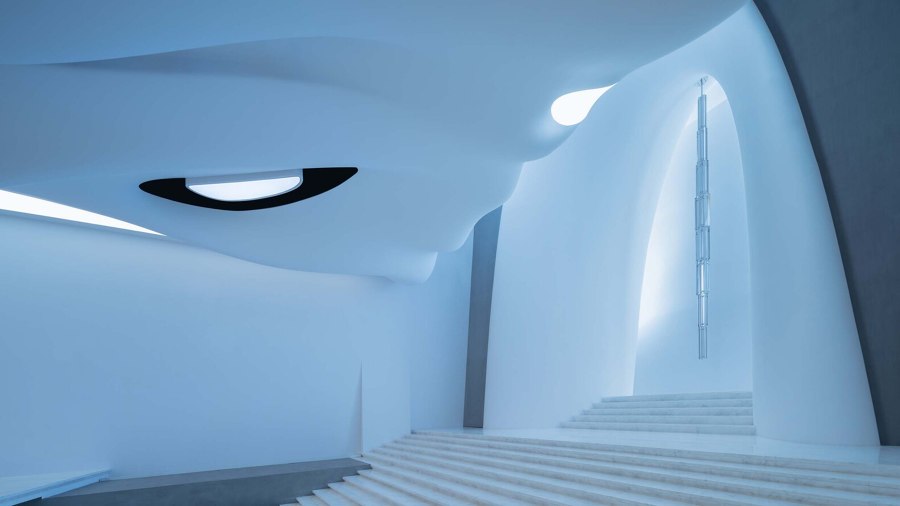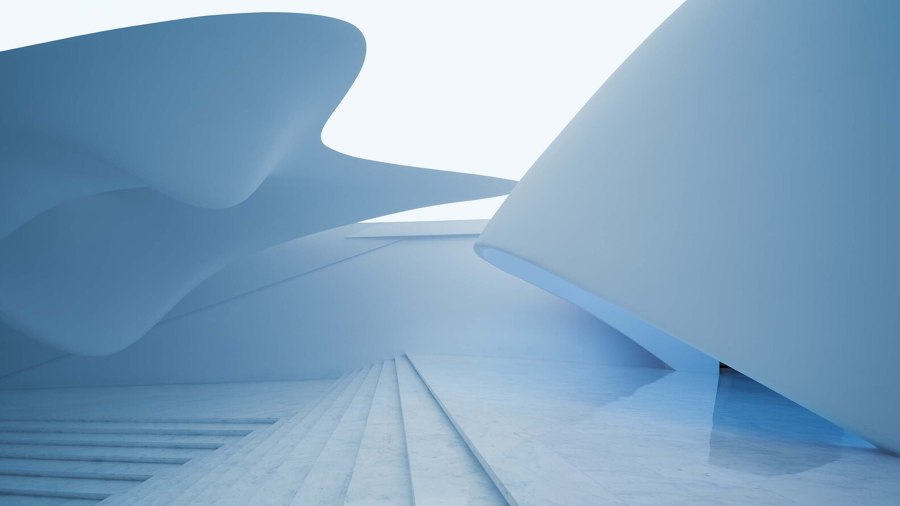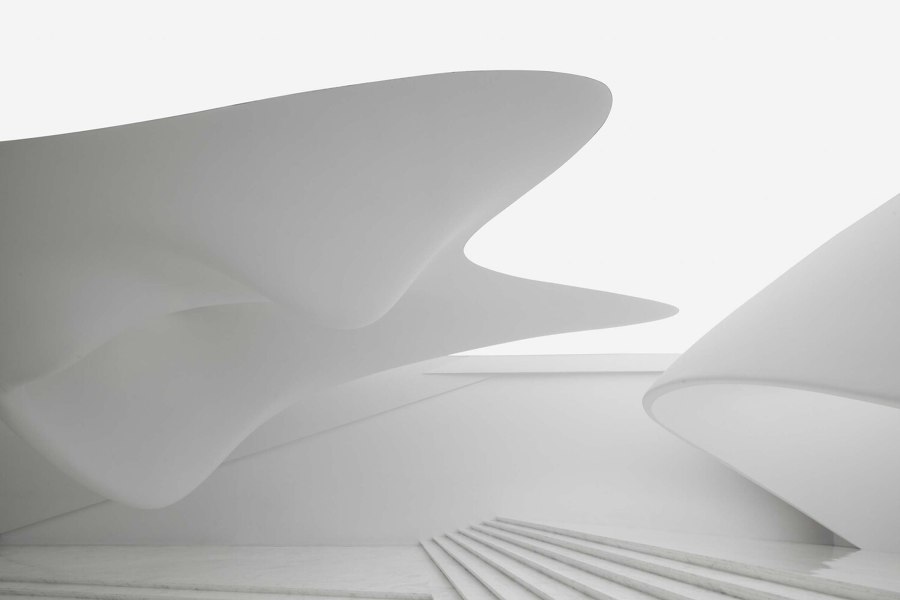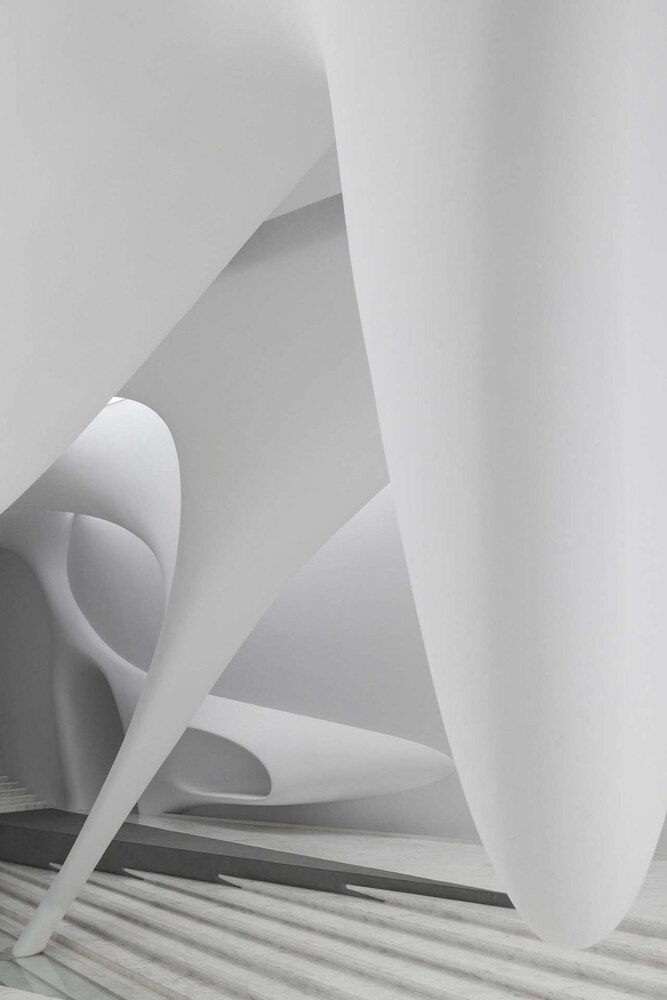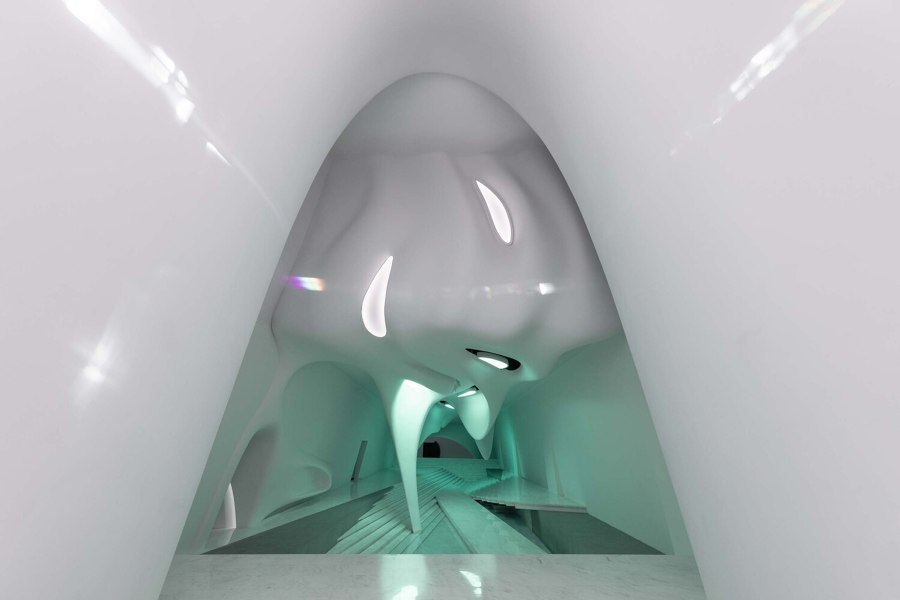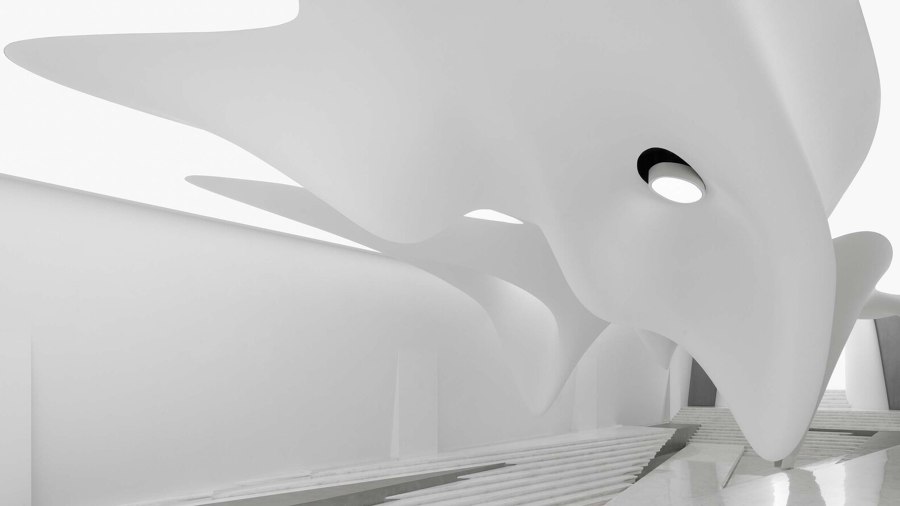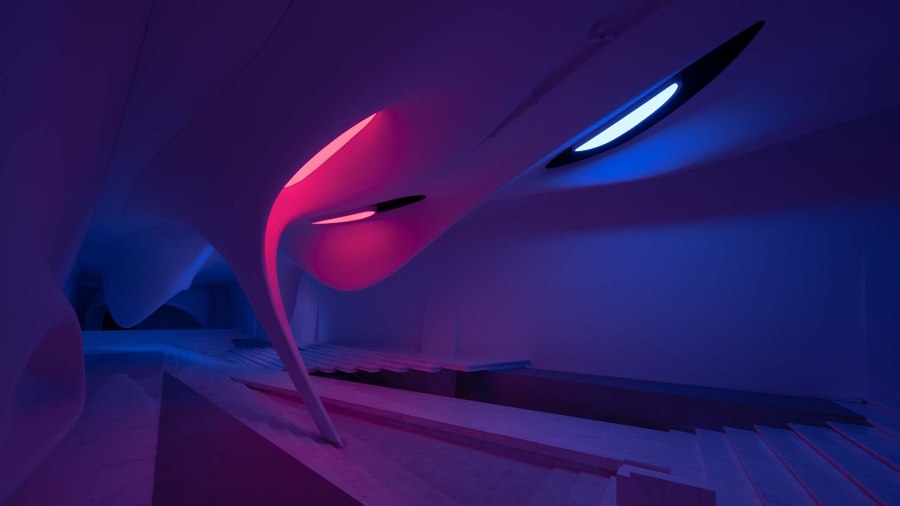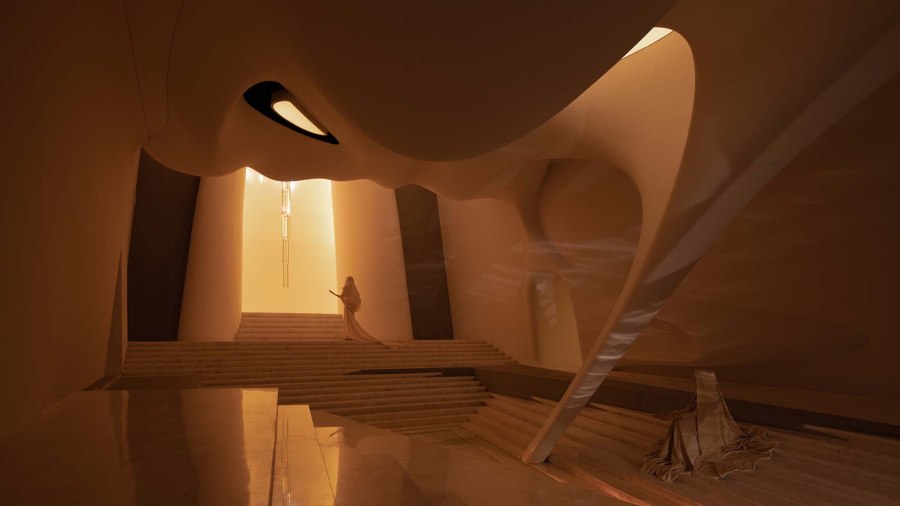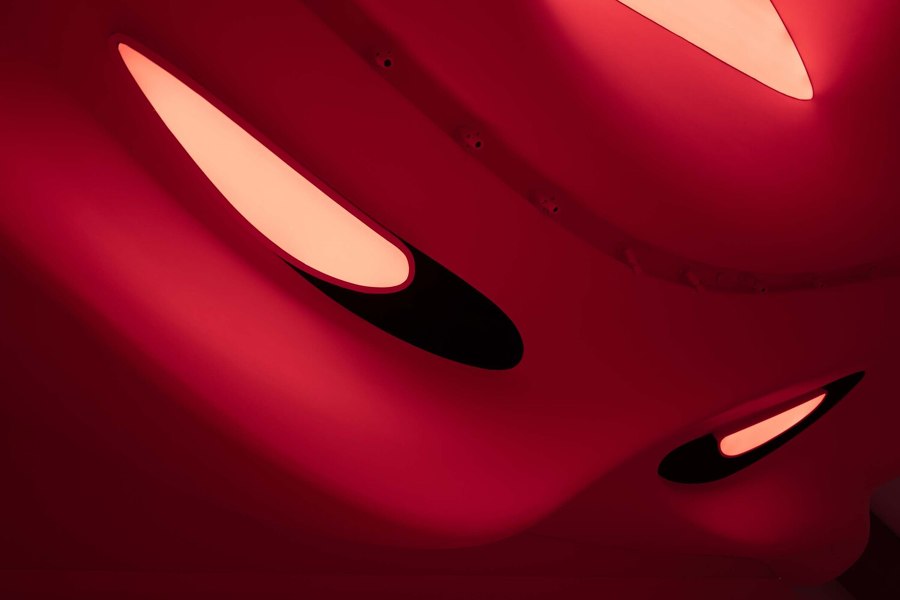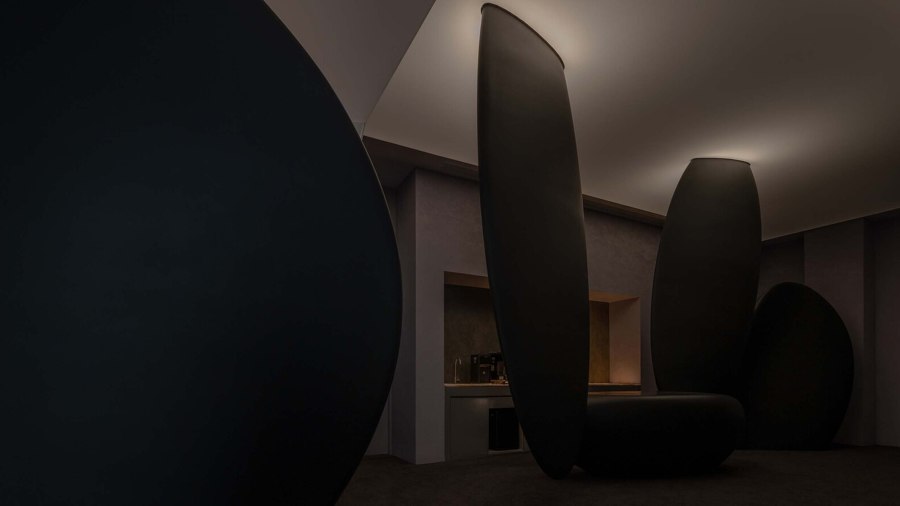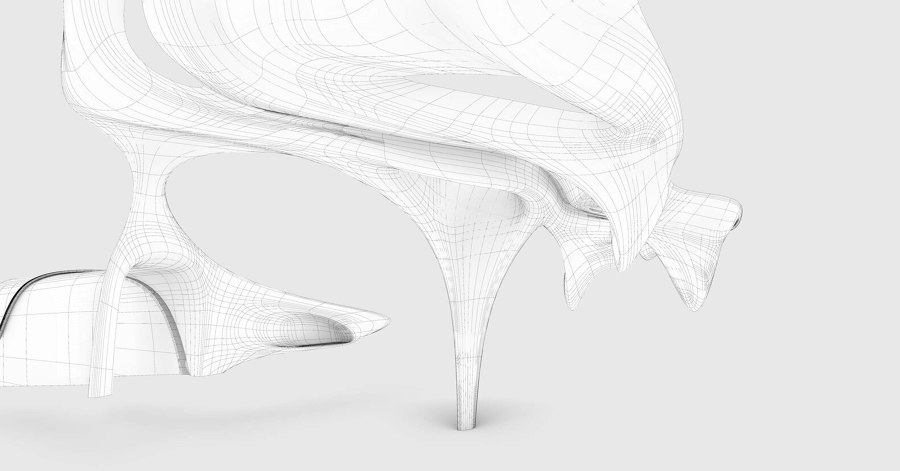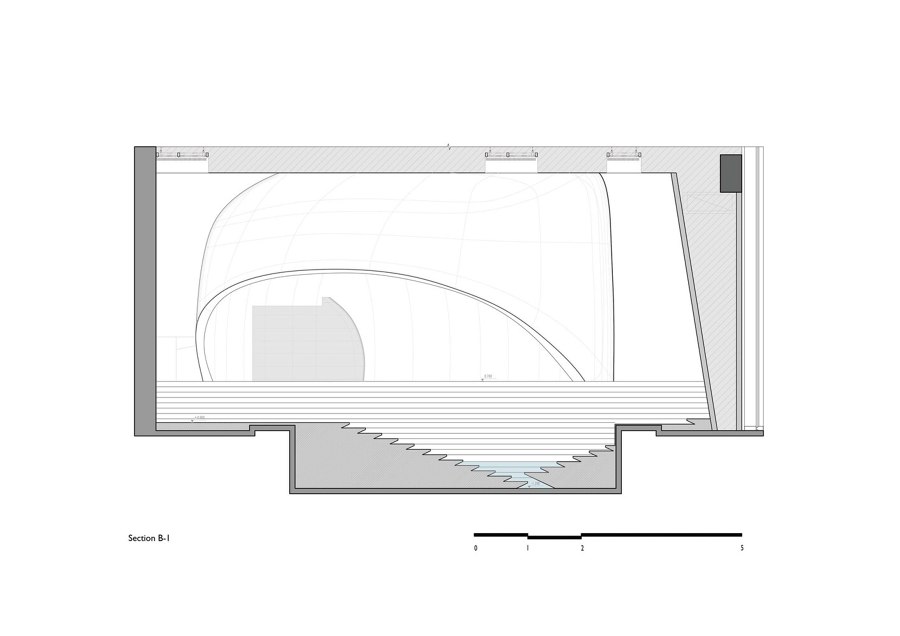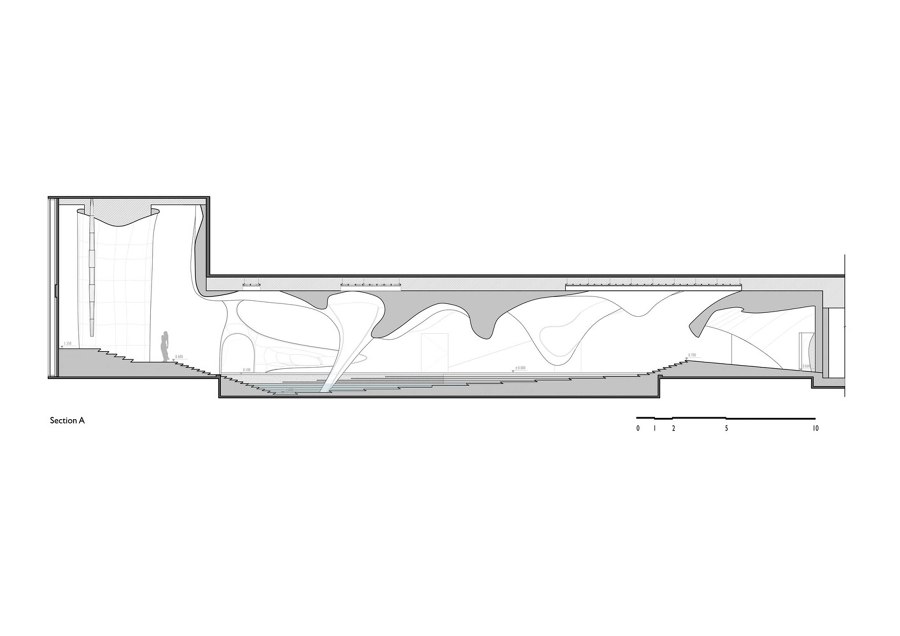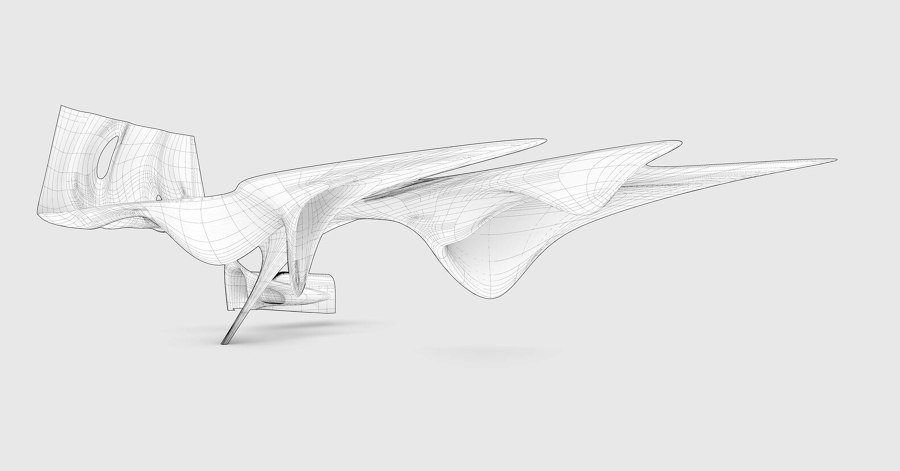The Origin of M2 - M2 Art Centre is a multifunctional art space located in Hangzhou, which originated from a wedding dress showroom. The initial function setting of the space triggered a reflection on women and their choices in marriage and relationships: Marriage is no longer a default option for everyone in contemporary society but rather a rational choice for individuals to grasp their own lives. Therefore, can a contemporary commercial exhibition space be expanded into a mind-body journey with some psychic touch, providing an opportunity for introspection and contemplation of life before the wedding moment? Can a space imbued with profound meaning serve as a versatile venue in the city, hosting various artistic and design activities? The design team SpActrum and the owner of M2 embarked on an unusual exploration together.
Initial Site Visiting - The site of M2 is located on the plinth of a high-rise office building, and the original space was a gym space with a swimming pool. The spatial sequence of the site begins at the square elevator hall on one side of the main space, followed by the more than 40-meter-long strip-shaped main space, with the floor partially sinking about 1.5 meters and the end being a 10-meter-high space. When Yan Pan, the chief designer of SpActrum, initially explored the site, the basic storyline of the M2 Art Center had already been outlined based on the preliminary on-site conditions: stepping into the sunken swimming pool, the sense of height in the main space was further stretched, and standing at the end of the pool, looking up at the 10-meter-high end space, Pan instantly felt a strong sense of sacred calling. The strong connection between the designer and the site made it clear that the design of M2 should be based on respect for the power of the place, seeking to express its spatial potential.
Aesthetic of Transforming Conflicts - In SpActrum's design philosophy, contemporary everyday expressions are characterized by discreteness, fragmentation, and conflicts. SpActrum believes that rather than avoiding or mitigating these conflicts, the aesthetic of fragmentation and conflicts are the defining characteristics of our time. In non-pure cultural spaces, designers must confront the important challenge of how to appropriately adapt to the functional characteristics of the space while continuing to explore the architecture. The unique and daring architectural language of M2 Art Centre, along with its atmosphere that evokes a sense of otherworldly sanctity, can be attributed to SpActrum's profound critical awareness of the multiple conflicts inherent in the project, their creative transformations, and multi-faceted design interventions. The first conflict faced by M2 arises from the transformation of the original spatial characteristics into new functional requirements. SpActrum chooses to maximize the potential qualities of the original site in order to create a comprehensive artistic space that could accommodate photography, future fashion exhibits, artistic events, and art exhibitions. This approach establishes a symbiotic relationship between the history of the site and the present.
The second conflict emerges from the spatial narrative and the tension between the designer's understanding of contemporary social conditions. One of the important functions of the new space was to showcase wedding dresses, but in modern society, marriage is no longer a universal experience, but rather a personal choice. SpActrum hopes that the spatial experience at M2 would not be a preconceived indulgence, but rather a journey that would inspire women's self-awareness and self-care. The third conflict is derived from the interpretation of the architectural language within a complex system of values and functions. Should the design strive for a pure geometric language throughout, or should it be informed by a higher-level logic and concept that integrates multiple geometric languages, while also responding and adapting to the original site? While geometric purity may at times conceal certain facts, SpActrum chooses to confront the conflicts between various systems without avoidance or evasion, in order to create a more comprehensive and adaptive design solution.
Black Stones & Cocoon & Alien Eye - Departing from the elevator hall, the pathway leads into a dark, enigmatic space where black stones float, smoothly but sharply descending from the faint light of the sky. They are mysterious, like the Ten Commandments descending upon Mount Sinai. One of the black stones partially covers a bright white opening, leading into a domed space where the ground slopes gently upward. The highest point of the space is an arched opening that rises from both sides. Looking back from the main space towards this location, the complete form of the space appears like a cocoon that contains the seeds of human beings, with the arched opening resembling an eyelid that visitors stand inside. This is the first place visitors land when arriving on this alien planet, and where they take their first glimpse at the new world.
The Inverted Valley and the Materialized Senses - By leveraging high space, the concept of an inverted valley is established, which makes the space ground clean and inclusive and suspends the themed objects in the air. The mirror-inverted reflection of conventional landscape objects creates aesthetic tension. At the same time, these hillsides are geometricized, more slender, ethereal, round, and sharp than natural hills, because they are separated from the gravitational constraints of natural hills. In this world, there is a unique experience of anti-gravity. The valley itself is a winding path, so when it is inverted, the peaks become hanging screens, and the path is dimly visible in the separated areas. As the viewer passes through the highest point of the cocoon chamber's opening, the ground path continues to descend, and the steepness of the valley is magnified. The peaks hang, curl, concave, elongate, and coexist. In many angles, they look like some physical representation of human senses such as ears, eyes, and mouths.
Altar and Vault - The extreme rationality and precision of the ground form a metaphor for human intelligence, in contrast to the infinite freedom of the sky. The spatial circulation deviates towards the diagonal direction of the oblique space, which extends the walking experience. The short steps in the space are vertical, while the long steps are mirror-like diagonals, complementing the original concrete structure of the pool and exposing some of its edges. SpActrum considers this as a faith to the site, without covering up or embellishing it. The new system and the old system playfully interact with each other. The steps extend downwards until they intersect on both sides, forming a pool. At the end of the pool, the steps continue to extend upwards, forming an aerial altar, attempting to approach the infinite nature with rationality. The altar is located under the dome, and its massive volume resembles an oracle, an eternal object from beyond the sky. Then, the holy light descends and flickers at the highest point of the entire space. Looking back, it presents the most magnificent and extraordinary scenery in the space.
A Life Path - Leaving the hat-shaped space from the highest point of the stairs, one enters the fantastic main space as if entering a movie space that reviews one's life. The ignorant and bewildered youth arrive in this world, and the hanging peaks resemble lips and earlobes as if they are calling out, whispering, inspiring, tempting, desiring, and making noise, trying to influence the innocent new life everywhere. They may be lost or moved, but ultimately, when facing the holy light that connects heaven and earth, they look back and understand themselves. This is the main storyline of the space.
Techniques & Materials - There are two aspects of design techniques explored in the M2 Art Centre project: 1) how to use spatial geometry to convey emotions and create feelings, and 2) how to use materials and techniques to realize the design. In terms of the first aspect, SpActrum explores the potentials of space and establishes four different geometric languages: flat geometry, regular surfaces, free-form surfaces, and symmetrical free-form surfaces. These correspond to the cocoon (the cradle when people leave their homes), classical temples (human wisdom and rationality), nature (essentially the humanization of nature, including an understanding of chaos), and divinity (absolute grandeur), respectively. SpActrum understands the intentions that come with form, allowing rich associations and references to be established in the space, creating a hierarchical relationship that extends the meaning of the space beyond the built space. In terms of the second aspect, the GRG and GRP shaping techniques meet the possibilities of all curved surfaces, and the use of white marble echoes classical architecture, while the extensive use of light films brings an endless sense of space. SpActrum establishes a connection between geometry and emotion through geometric manipulation, which originates from our deep collective memory as humans and goes beyond the original narrative, becoming our intuitive response to the space. M2 Art Centre is a place with unique spiritual characteristics and rich symbolic meanings. Through metaphorical spatial narrative and the use of different categories of geometric forms under the control of superb geometric mastery, the space is endowed with ambiguous and multiple meanings, with many metaphors and references hidden in the pure geometric forms. The result is a space that offers a concentrated and profound spiritual experience and provides Hangzhou with a platform for various new ideas, aesthetics, and arts to be communicated and promoted.
Design team: SpActrum
Lead Architect: Yan Pan
Design Team: Hao Chen, Zhen Li, Yimeng Tang, Yijie Zhang, Xiao Wan, Jinyu Wan, Yiran Pan
Lighting Design: Xiaohao Guan
Special Curved Surface Construction: eGRow
